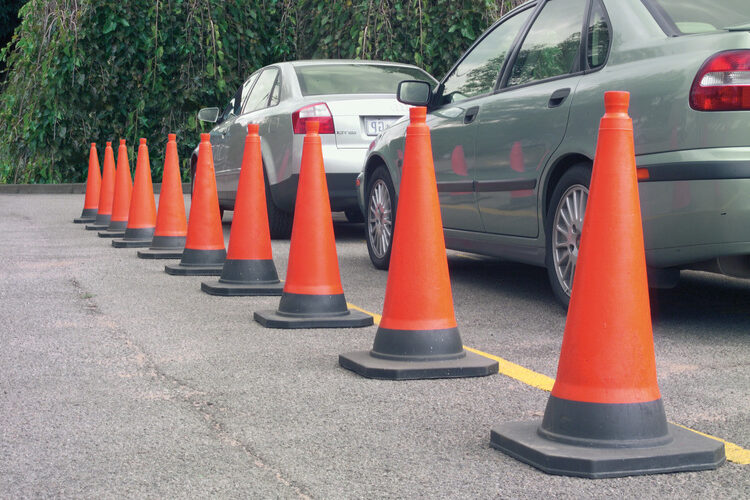Traffic cones are used extensively on South African roads, yet few people ever stop to think where the cones come from and what the history of these pylons is. It is, for example, both surprising and perhaps horrifying to learn that, while modern-day road pylons are made from plastic, they used to be initially made from concrete. Just imagine how heavy the pylons must have been and the danger they posed to road users. The impracticality of the concrete cones soon became apparent and the concrete pylons were replaced with wooden ones. Still a far cry from the lightweight designs we have today, these pylons served their purpose to warn motorists of roadworks. Fortunately, we no longer have the concrete and wooden traffic pylons; modern-day traffic cones are lightweight and hollow for easier stacking when stored or transported. As such, they take up less space.
The hollow design is also why they are so light in weight. However, to prevent the cones from blowing over in the slightest breeze, these traffic pylons’ weight is concentrated in their sturdy bases. Because these products are made for road-safety purposes, the pylons must be lightweight for quick deployment and to prevent damage to vehicles impacting them. Often referred to as witch hats because of their distinctive design, these pylons are for use in temporary applications only. What almost all of them have in common is the bright colours, such as yellow, daylight glow, green, orange, and red. Some are fitted with reflective strips to make them even more visible at night or on rainy days. Traffic cones are made from sturdy plastic and are UV-resistant, so they can maintain their luminous visibility for longer, even during South Africa’s harsh summers. To perform well, the pylons must be durable and to this end, the material from which they are made are exceptionally tough.
Wide Range of Applications
As mentioned earlier, traffic cones are used for many applications, some of which are briefly discussed below:
- At accident scenes. Emergency workers deploy the cones around accident scenes to channel motorists away from the debris, evidence, injured parties, and emergency personnel. A temporary path is thus created around the scene to regulate traffic.
- At pedestrian crossings. You may also have noticed the brightly coloured pylons at pedestrian crossings, where they show motorists how far away they should stop and to create a safe walk area for pedestrians.
- At events. The pylons are often used at events to indicate areas that are off limits or to create ticket lines.
- At sports activities. Pylons are frequently used by sports coaches to create temporary goals or obstacle courses. The cones can also be deployed during track and field activities to demarcate specific sections to particular sports activities.
- To demarcate lanes. Such pylons are also used to temporarily create lanes for cyclists or athletes participating in road races. With them in place, the participants know where they can safely run or cycle and motorists are directed away from the participants.
- At stop-and-go areas. The cones are also used at stop-and-go signs to channel vehicles into a temporary lane. This can also be the case where police officers want motorists channelled into a lane next to the main path at roadblocks.
- At roadworks. Where municipal workers cut grass, clean areas next to the road, or perform other types of maintenance, they place the pylons some distance away from them in the path to warn motorists of potential danger and to direct them a safe distance away from the works in progress. Though the pylons cannot prevent straying vehicles from breaking through, they do serve as a highly visible means to notify, redirect, and channel – and to create clearly demarcated spaces for workers.
- Where heavy vehicles operate. Where heavy vehicles operate, such as at mines, they often need highly visible visual aids to see exactly where they can drive. To this end, huge pylons are placed to show them which paths to use.
It is imperative to select durable and sturdy road-safety products to ensure a long service life. We manufacture a range of traffic cones to meet the highest standards of quality, functionality, colour, and durability. View our range of products and get in touch for ordering information.

